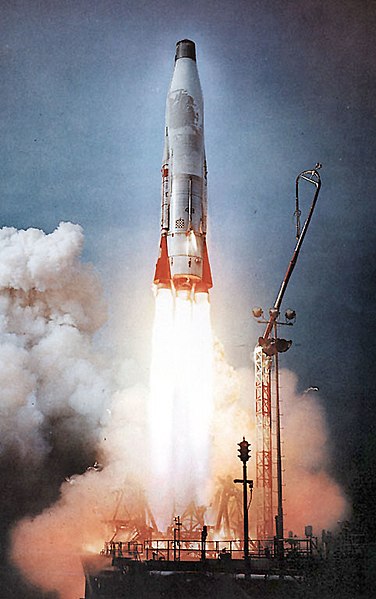The RT-23 Molodets was a cold-launched, three-stage, solid-fueled intercontinental ballistic missile developed and produced before 1991 by the Yuzhnoye Design Bureau in Dnipro, Ukraine. It came in silo- and rail-based variants, and was armed with 10 MIRV warheads of 550 kt yield. All missiles were decommissioned by 2005 in accordance with the START II.
BZhRK three-car autonomous launching module
The overhead line short-circuiting and diverting mechanism
Railcar outriggers, deployed before launch
RT-23 BZhRK at Varshavsky railway station. Now moved to Russian Railway Museum.
Intercontinental ballistic missile
An intercontinental ballistic missile (ICBM) is a ballistic missile with a range greater than 5,500 kilometres (3,400 mi), primarily designed for nuclear weapons delivery. Conventional, chemical, and biological weapons can also be delivered with varying effectiveness, but have never been deployed on ICBMs. Most modern designs support multiple independently targetable reentry vehicle (MIRVs), allowing a single missile to carry several warheads, each of which can strike a different target. The United States, Russia, China, France, India, the United Kingdom, Israel, and North Korea are the only countries known to have operational ICBMs.
A US Peacekeeper missile launched from a silo
An SM-65 Atlas, the first US ICBM, first launched in 1957
ICBMs can be deployed from transporter erector launchers (TEL), such as the Russian RT-2PM2 Topol-M
Artist's concept of an SS-24 deployed on railway








